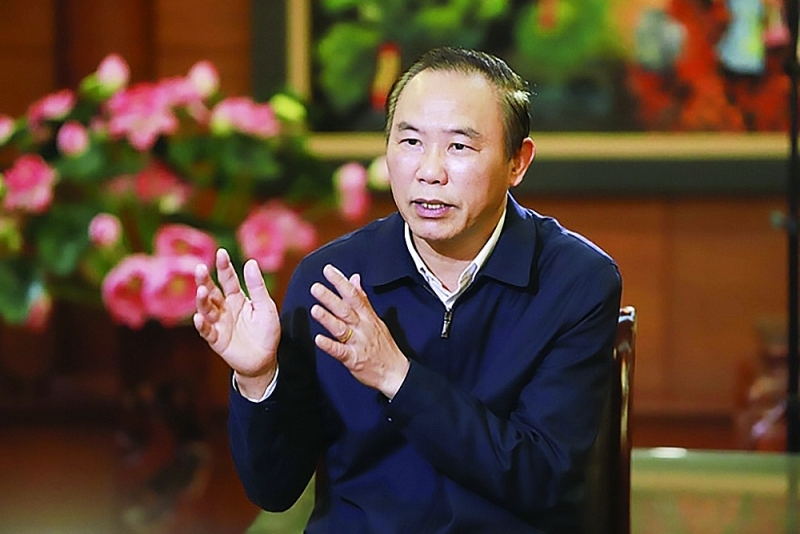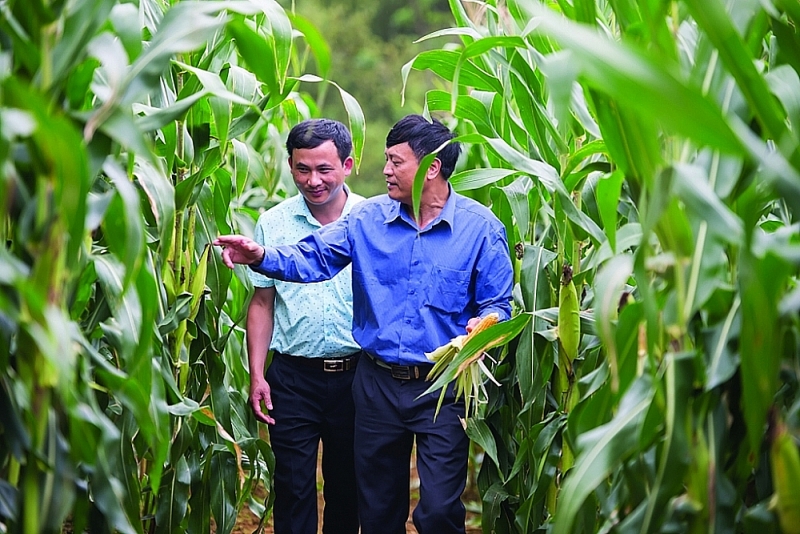Restructuring the production chain and logistics of the animal feed industry
According to Deputy Minister of Agriculture and Rural Development Phung Duc Tien (pictured), Vietnam's livestock industry has great potential and room for development. The project on developing the feed processing industry that is being built will aim to solve the problem of animal feed in each region associated with livestock production facilities. This is an important solution to improve the competitiveness of the entire livestock industry in Vietnam
 |
|
Deputy Minister of Agriculture and Rural Development Phung Duc Tien |
What is an effective solution to "cool down" animal feed prices, providing income for farmers?
Over the past year, the price of industrial animal feed has increased, especially in early 2022. Animal feed costs account for 65-70%, so this greatly affects the livestock industry.
To reduce pressure, farmers first need to make the most of available feed materials and agricultural by-products.
After many years of research, the Institute of Livestock Production together with other units have evaluated the nutritional value of feed ingredients in the localities; using mixed feed value analysis software, giving a reasonable feed formula.
The research results have been applied to many subjects, such as raising pigs with foreign pigs, indigenous pigs, poultry farming. In the future, this practice will continue to be replicated. By doing so, the price of feed will be reduced by VND300 - 1,000/kg; livestock costs will be reduced by 5-7%.
In particular, the solution is to convert some inefficient land to growing feed materials. The Ministry of Agriculture and Rural Development has directed De Heus Group to coordinate with the Central Highlands provinces to establish cooperatives, focusing mainly on developing raw material areas for cassava and maize to reduce the pressure of importing feed materials.
 |
|
Converting some inefficient arable land to growing feed materials, typically GM maize is one of the effective solutions to increase the autonomy of feed materials. Photo: Nguyen Thanh |
The Ministry of Agriculture and Rural Development is developing a project to develop the feed processing industry. Could you share more details about the main content of this project?
Facing imports of a large number of feed materials, the project on developing the feed processing industry that is being built will aim to solve the problem of animal feed in each region associated with livestock production facilities.
Since the production chain from seed, feed, farming area and logistics with food processing factory needs to be restructured. For example, the country currently has over 200 feed processing factories, the design capacity and operation are very different. In the scheme for development of the feed processing industry, it must be solved by regions associated with livestock production facilities, with a step of restructuring, because technology is like a flow. If it is outdated, it will not meet the criteria.
Vietnam's livestock industry is considered to have a lot of room for development. What policies has the Ministry of Agriculture and Rural Development (MARD) been making towards sustainable development of the livestock industry, especially in building a safe breeding area to meet domestic as well as export demand, Deputy Minister?
Developing the livestock industry in a sustainable and effective way, the Ministry of Agriculture and Rural Development has submitted to the Prime Minister for approval of the "Strategy for livestock development in the period of 2021 - 2030, with a vision to 2045". The specific objective of the Strategy is the average growth rate of production value in the period 2021 - 2025 from 4-5%/year; the period 2026 - 2030 on average from 3-4%/year.
According to the orientation of livestock development to 2030 and a vision to 2045, Vietnam's livestock production is a modern and economic industry and is industrialized in almost every stage from production, processing, preservation to final results connecting product consumption markets, in which the level and production capacity are among the leading countries in Southeast Asia. 100% of livestock and poultry meat products are supplied from concentrated and industrial slaughterhouses and over 70% of the volume of main livestock products are preliminarily processed and industrially processed, including about 30% that are deeply processed.
Disease safety plays a very important role in ensuring food safety. Over the years, the Ministry of Agriculture and Rural Development has implemented a clear action plan as well as orientation for the next stages. In the past year, many disease-free breeding areas have also been built. Many businesses have invested in closed livestock production chains such as Dabaco, CP, De Heus, TH, Vinamilk. Enterprises have cooperated with localities to build disease-free zones.
Believing that, with a synchronous solution from breeders, feed, veterinary medicine, disease prevention, model building and disease-free zones, the output and value of the livestock industry will increase rapidly, ensuring sustainable development in the future.
Thank you very much!








